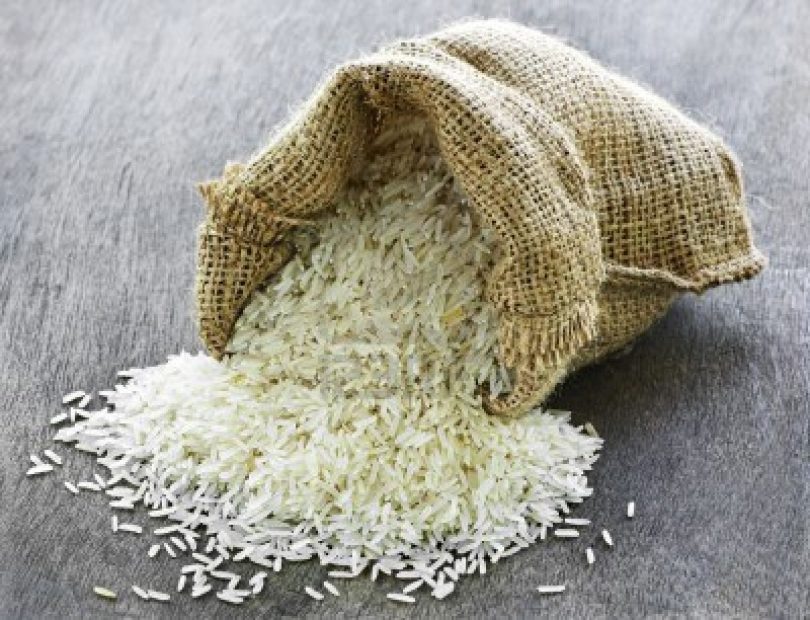Written By Kimberley Cuachon Haugh —
How ’bout some arsenic, too?
As a person of Filipino descent where rice is a culinary cultural staple, I kind of went into freak out mode when I found out the high amounts of arsenic found in rice. Would I be on the verge of some terminal illness, now?
We should be a little concerned, as arsenic is poisonous at high doses. Indeed, arsenic is a natural environmental element. It is found in our water system as an industrial by-product. And because rice is grown in water-flooded conditions, this grain is absolutely susceptible to arsenic. Continuous exposure at lower levels may increase your risk of bladder, lung, and skin cancer, as well as heart disease, infertility, and diabetes, according to the Agency for Toxic Substances and Disease Registry.
According to the School of Public Health at the University of California, Science Daily, Consumer Reports and numerous media outlets, Americans should be concerned about arsenic levels in American-grown rice. Consumer Reports’ results list that “white rice grown in Arkansas, Louisiana, Missouri, and Texas, which account for 76 percent of domestic rice, generally had higher levels of total arsenic and inorganic arsenic in our tests than rice samples from elsewhere.”
Ironically, while Americans are striving for American-made products, in this instance, we must turn to India, Thailand, and China—which ironically has a reputation for poor food safety standards actually regulates the amount of arsenic found in food. If you do choose to source domestically, the FDA has found that California also has low traces of arsenic. It turns out that back in the day, arsenic-based pesticides were used for decades on old cotton fields in some parts of the U.S., which are used to grow rice crops today.
Before you conduct a dietary overhaul, allow me to put it in perspective. We are always exposed to arsenic. It is found in our water, the air, and other foods besides rice. In fact, another investigation by Consumer Reports found that nearly 10 percent of 88 samples of apples and grape juices tested to have high levels of arsenic (but that’s for another blog post). You should know that there is currently no regulation on the amount of arsenic found in our food except for in our drinking water which is 10 parts per billion, double the originally proposed amount by the Environmental Protection Agency.
You should also know that the FDA released a statement that “there is not sufficient data about arsenic levels in rice or potential risk to human health on which to base any recommendations to lower consumption or stop eating rice.” In my opinion, you may wish to take that with a grain of salt, or rice, for that matter.
What is our best recourse? A varied diet, for starters. Therefore, not the traditional Filipino diet that calls for rice almost three times a day—nothing healthy about that. (Personally, I may have rice once a week). As mentioned earlier, look for rice grown in California and imported basmati and jasmine rice from India, Pakistan and Thailand. Studies have shown that white rice has less arsenic than brown, due to the stripping of its outer layer. You may wish to also limit your intake of food with multiple rice products.


- 1 ½ cups of cooked jasmine rice
- 12 ounces of diced chicken meat (white/dark)
- 8 ounces of diced shrimp (same size as chicken)
- 1/3 cup of diced button mushrooms
- 1/3 cup of diced carrot
- 1/3 cup of diced broccoli stem, peel outer layer
- 1/3 cup of oyster sauce
- 2 scallions sliced on a bias
- 2 cups of water
- 2 eggs
- 4 tablespoons of vegetable oil
- 1 pinch of sugar
- Salt and white pepper to taste
- Heat the wok to high heat to first blanch the vegetables, with a pinch of sugar and salt. Remove them and drain. Add enough water to the wok to quickly blanch your shrimp. Remove them and drain. Set your shrimp and vegetable aside. Add oil to the wok and cook chicken. Add shrimp back, to finish cooking. Remove both and set aside. Add more oil to the wok and then add rice.
- Add eggs to the rice. Keep moving the eggs and rice back and forth in the wok to avoid them from sticking. Season the rice with salt, white pepper and a couple of tablespoons of oyster sauce. Once everything is incorporated plate your rice. On high heat add 2 cups of water to the wok. Once it comes to a simmer add your meat and vegetables back to the wok along with the scallions. Add 3-4 tablespoons of oyster sauce. You will see the sauce thicken quickly. Remove the wok from the burner and top your fried rice. Serve immediately.
- As with any fried rice recipe, be sure to have all your ingredients prepared and at arms-length ahead of time because once you get going with your wok, you won’t have the time.


